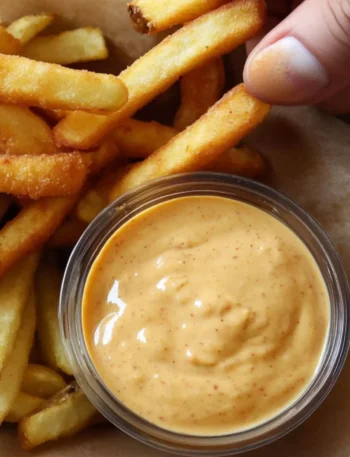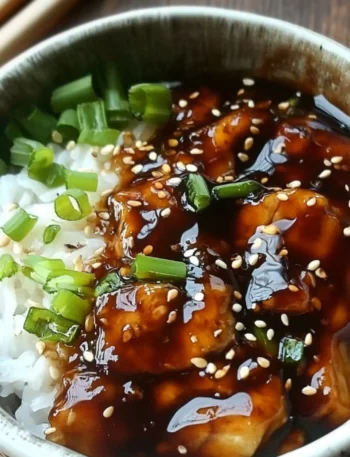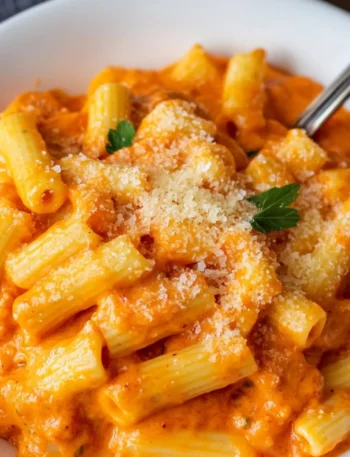Let me tell you, there’s nothing like a steaming bowl of chow mein. Remember that satisfying crunch, followed by tender noodles coated in delicious sauce?
It’s crunch time! But ditching the takeout menu for this homemade copycat Panda Express chow mein is so much better—and it’s easier than you might think. Plus, I can assure you, once you try making it at home, you won’t want to go back.
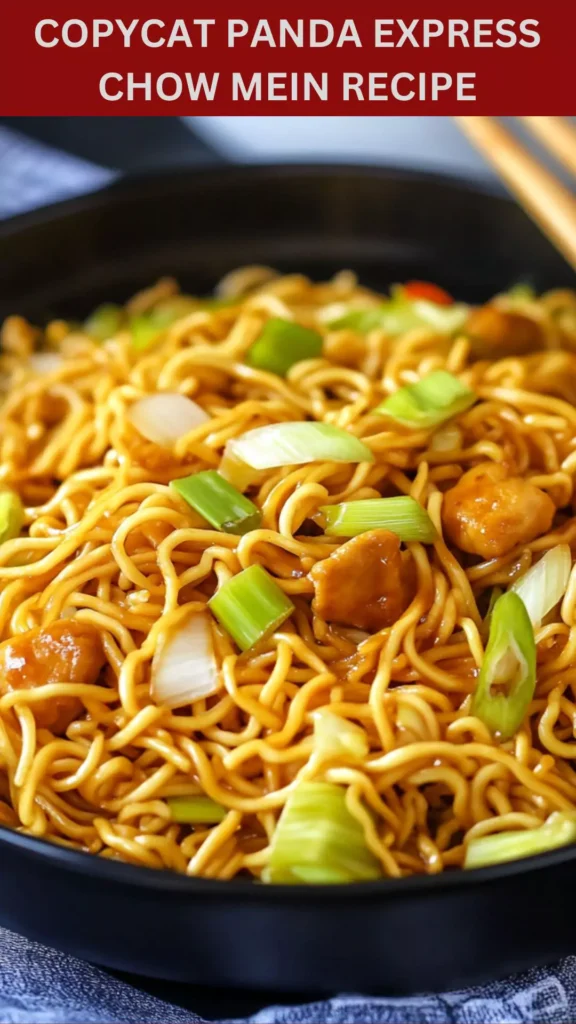
What is Copycat Panda Express Chow Mein?
At its core, copycat Panda Express chow mein is all about those flavors we crave when we think of Asian cuisine. It mimics that irresistible dish you order from your favorite Chinese fast-food spot.
It typically features stir-fried Chinese egg noodles tossed with crisp vegetables, a savory sauce, and a touch of garlic. You get the nice chewiness of the noodles balanced by a medley of textures from the veggies. And who can resist that?
I remember the first time I tried the official Panda Express chow mein. I was a college student, broke, and often relied on cheap comfort food. Chow mein was my go-to; it was quick, satisfying, and oh-so-perfectly indulgent.
But after college, I wanted that same experience without the fast-food label. So, I ventured into my kitchen and created my own version that’s quick, nourishes the soul, and captures that authentic taste.
You will also like the following Side Dish recipes!
- Best Jack In The Box Bacon Mayo Recipe
- How to make Jack In The Box Egg Roll
- Easy Jack In The Box Sun Dried Tomato Sauce Recipe
Why You’ll Love This Copycat Panda Express Chow Mein
This recipe is not just another food blog basic. It brings that nostalgic takeout experience right into your kitchen. The convenience of this chow mein is unmatched. You can whip it up in about 20 minutes and make it much healthier than anything from a restaurant.
You’ll love it for several reasons:
Quick Preparation: In under 30 minutes, you’re sitting down to a delicious bowl of noodles.
Customizable: Feel free to toss in any veggies you have on hand. No bok choy? No problem!
Budget-Friendly: Forget pricey takeout. This homemade version saves your wallet while leaving you satisfied.
Flavor Packed: It’s easy to achieve that rich flavor that rivals any restaurant. Your taste buds will thank you!
Let’s get down to the best part: the ingredients.
The Ingredients
Here’s a simple shopping list to gather before starting to cook:
- 3 (5.6 ounce) packages Yakisoba noodles or Chinese egg noodles (found in the produce section, typically in a 17oz pack)
- ¼ cup soy sauce (choose low sodium if you prefer less salt)
- 1 tablespoon brown sugar (for that hint of sweetness)
- 2 cloves garlic, minced (adds a delicious base flavor)
- 1 teaspoon freshly grated ginger (for a zesty kick)
- Freshly ground black pepper, to taste
- 2–3 tablespoons vegetable oil (don’t skimp here; it helps sauté the veggies nicely)
- ⅔ cup celery, diagonally chopped
- 1 medium onion, thinly sliced
- 2 cups chopped cabbage (a must for a great crunch)
- 1 tablespoon rice vinegar (optional, adds a bit of acidity)
- ½ teaspoon sesame oil (optional, for that extra depth of flavor)
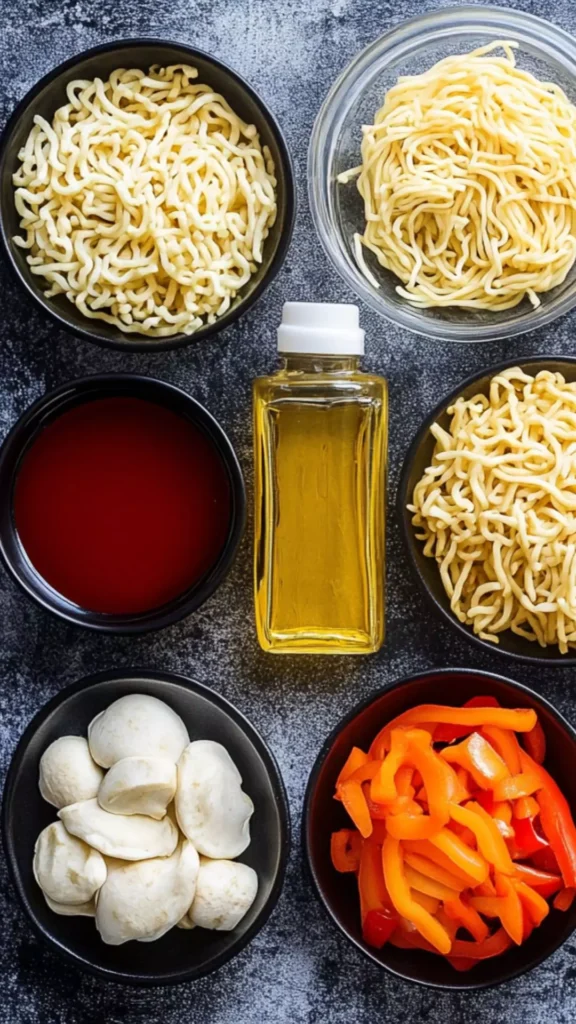
Step-by-Step Instructions
Let’s dive straight into the cooking process. Grab your apron; it’s chow mein time!
Step 1: Cook the Noodles
Start by cooking the noodles. If you’re using Yakisoba, they usually need just a minute or two in boiling water. If you’re using Chinese egg noodles, follow the package directions. Drain them and set aside. Feel free to toss in a bit of oil to prevent them from sticking together.
Step 2: Prepare the Flavor Base
In a large skillet or wok, heat up the vegetable oil over medium-high heat. Once the oil shimmers, add the minced garlic and grated ginger. Sauté them until fragrant, about 30 seconds. Trust me; your kitchen will start smelling divine!
Step 3: Stir-Fry the Vegetables
Now, toss the chopped celery and sliced onion into your skillet. Sauté for about 3-4 minutes until they start to soften. The colors will make you excited to dive in. Then, add the chopped cabbage, giving it another 2-3 minutes. You want the cabbage to wilt but still have some crispness.
Step 4: Add the Noodles and Sauce
Time to get those noodles back in action! Add them right into the skillet with the veggies. In a separate bowl, mix soy sauce and brown sugar until combined and then pour this sauce over the noodles and veggies. Toss everything together until the noodles are evenly coated.
Step 5: Season and Finish
Add freshly ground black pepper to taste, and if you’re feeling adventurous, splash in some rice vinegar for acidity. Drizzle sesame oil on top for that authentic flavor. Mix once more until everything is hot and well-incorporated.
Step 6: Plate and Enjoy
Serve this chow mein hot and fresh! You can garnish it with toasted sesame seeds or some chopped green onions for an extra pop of flavor and color.
Tips and Tricks
Here are some tried-and-true tips to level up your chow mein experience:
Add Protein: Toss in cooked chicken, shrimp, or tofu for a heartier dish.
Adjust the Sauce: If you like it sweeter, add more brown sugar. More soy sauce gives a saltier taste.
Play with Veggies: Bell peppers, carrots, or snap peas are fantastic substitutes or additions.
Don’t Overcrowd the Pan: Work in batches if your skillet is smaller. This ensures even cooking.
Leftover Love: This dish is great for meal prep. Store it in the fridge and enjoy it over the week.
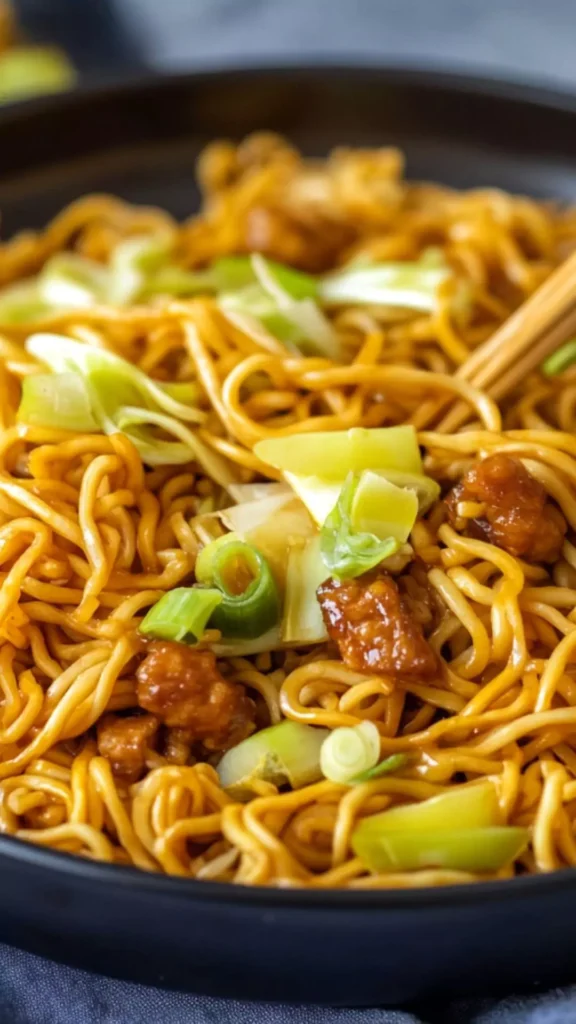
Can I Store Copycat Panda Express Chow Mein?
Absolutely! In fact, it keeps well. Store any leftovers in an airtight container in the fridge for up to 3 days.
When you’re ready to enjoy it again, just reheat in a skillet for the best texture. Add a splash of water or more soy sauce while reheating to keep it from drying out.
What Can I Serve with Copycat Panda Express Chow Mein?
This dish pairs wonderfully with a variety of sides. Consider these options:
- Spring Rolls: Crisp and flaky, they make an excellent pairing!
- Egg Drop Soup: A classic choice, warming and flavorful.
- Asian Salad: Fresh veggies with a sesame dressing complement the dish.
- Grilled Chicken: If you’re looking for added protein, this is a winner.
- Dumplings: Whether steamed or fried, they round out the meal beautifully.
Variations
This dish is an empty canvas. Here are some exciting variations to consider:
Add Greens: Throw in bok choy or spinach for extra nutrition. They wilt down nicely and blend in with the chow mein.
Spicy Kick: Mix in some red pepper flakes or sliced jalapeños. Spicy lovers will appreciate this twist!
Mushroom Medley: Sauté a mix of shiitake, button, and portobello mushrooms. They add an earthy flavor and meaty texture.
Zucchini Noodles: For a low-carb option, swap traditional noodles for spiralized zucchini. It’s light yet satisfying.
Teriyaki Chow Mein: Incorporate teriyaki sauce instead of soy sauce for a sweet and tangy influence that changes everything.
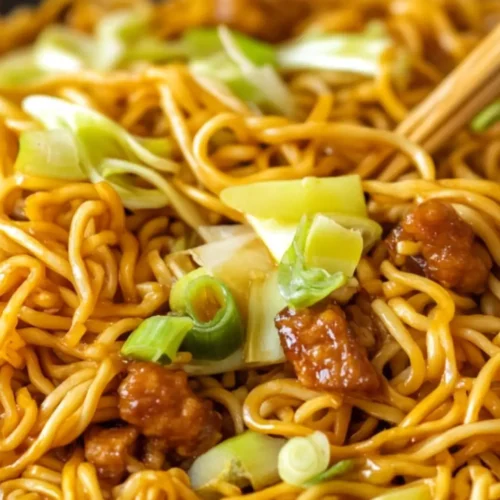
Copycat Panda Express Chow Mein Recipe
Equipment
- Large skillet/wok
Ingredients
- 3 5.6 ounce packages Yakisoba noodles or Chinese egg noodles (found in the produce section, typically in a 17oz pack)
- ¼ cup soy sauce
- 1 tablespoon brown sugar
- 2 cloves garlic minced
- 1 teaspoon freshly grated ginger
- Freshly ground black pepper to taste
- 2 –3 tablespoons vegetable oil
- ⅔ cup celery diagonally chopped
- 1 medium onion thinly sliced
- 2 cups chopped cabbage
- 1 tablespoon rice vinegar optional, for a touch of acidity
- ½ teaspoon sesame oil optional, for extra depth and flavor
- ½ teaspoon sesame oil (optional, for extra depth and flavor)
Instructions
- Let’s dive straight into the cooking process. Grab your apron; it’s chow mein time!
Step 1: Cook the Noodles
- Start by cooking the noodles. If you’re using Yakisoba, they usually need just a minute or two in boiling water. If you’re using Chinese egg noodles, follow the package directions. Drain them and set aside. Feel free to toss in a bit of oil to prevent them from sticking together.
Step 2: Prepare the Flavor Base
- In a large skillet or wok, heat up the vegetable oil over medium-high heat. Once the oil shimmers, add the minced garlic and grated ginger. Sauté them until fragrant, about 30 seconds. Trust me; your kitchen will start smelling divine!
Step 3: Stir-Fry the Vegetables
- Now, toss the chopped celery and sliced onion into your skillet. Sauté for about 3-4 minutes until they start to soften. The colors will make you excited to dive in. Then, add the chopped cabbage, giving it another 2-3 minutes. You want the cabbage to wilt but still have some crispness.
Step 4: Add the Noodles and Sauce
- Time to get those noodles back in action! Add them right into the skillet with the veggies. In a separate bowl, mix soy sauce and brown sugar until combined and then pour this sauce over the noodles and veggies. Toss everything together until the noodles are evenly coated.
Step 5: Season and Finish
- Add freshly ground black pepper to taste, and if you’re feeling adventurous, splash in some rice vinegar for acidity. Drizzle sesame oil on top for that authentic flavor. Mix once more until everything is hot and well-incorporated.
Step 6: Plate and Enjoy
- Serve this chow mein hot and fresh! You can garnish it with toasted sesame seeds or some chopped green onions for an extra pop of flavor and color.
Notes
Nutrition
Frequently Asked Questions
Can I use different types of noodles?
Absolutely! You can substitute traditional chow mein noodles with ramen or even rice noodles. Just keep in mind that cooking times may vary.
Is this dish vegetarian?
Yes! This recipe is vegetarian-friendly. If you want to keep it vegan, just ensure that your soy sauce and other sauces do not contain any animal products.
Can I freeze the chow mein?
Freezing is possible, but it can alter texture. If you must, freeze it in an airtight container, leaving some room for expansion. Use it within a month for best results.
What’s the best storage method?
Store cooled chow mein in an airtight container. Make sure it’s completely cooled before sealing it to avoid condensation.
How do I make it gluten-free?
Use gluten-free soy sauce and look for gluten-free noodles. Many stores carry great alternatives made from rice or other grains.
Conclusion
This copycat Panda Express chow mein has a special place in my recipe books. It combines nostalgia with incredible flavors. Plus, it’s easy to whip up on a busy weeknight. With the flexibility to customize, you can make it your own.
So gather your ingredients and create a dish everyone will love. If you crave that tasty chow mein feel without leaving your home, you’ll find this recipe to be your new favorite. Let’s cook and bring a little taste of Panda Express into our kitchens!

